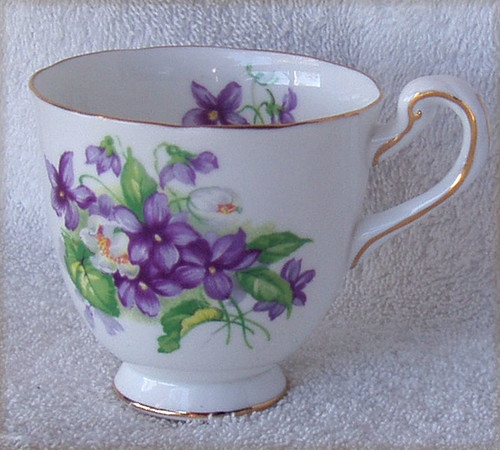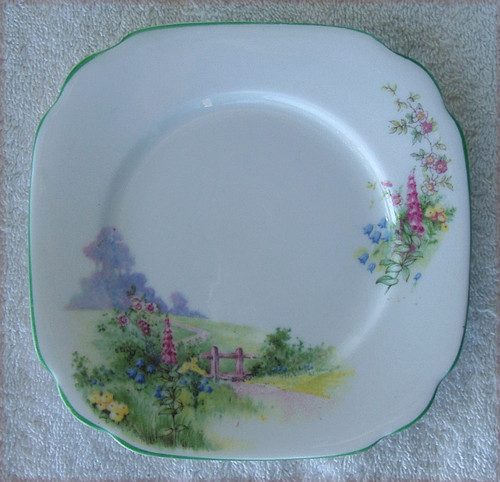R.H & S.L Plant (established 1900) produced pieces of New Chelsea from around 1912 but production was interrupted by the War effort and all that entailed for English pottery works. After the War, in 1945, the New Chelsea tradename was back in use and continued until the early 1950's
Product from R.H & S.L Plant was known for the high quality product and workmanship, or to be more politically correct "skilled workwoman" as a high percentage of product in the pottery works was decorated by women.
It is no accident that a few years later, in the mid 1960's, R.H & S.L Plant was purchased by Wedgwood, bringing another high quality porcelain maker into the Wedgwood "fold"
Actually there is a LOT of New Chelsea china product to be found online, most of the pieces are very beautiful and visually "exciting to the senses" although I could not find anyone with this particular design under the tradename New Chelsea (the works also produced other product for 3rd parties and their own Royal Chelsea tradename).
This piece of New Chelsea is from the early 1950's, note the design of the matching teacup with an upturned handle and the fact it has been hand decorated, painting and gilded, crafts that have substantially vanished with contemporary products.
An extremely "traditional" artwork design, the War had only been "finished with" 5 years earlier and chinaware designs tended to portray "peace and tranquility" - you can't get more peaceful than flowers from the meadows!
I have more pieces from our NEW CHELSEA "Spring Violets" teaset, take a look HERE if interested
DLAT Rating: 9.5/10 (Darling Look At This!)
NEW CHELSEA - Side Dish (1) ONLY
R.H & S.L Plant
Made in Longton, Staffordshire - Britain
Fine Bone China Side Dish
Yes, at first glance it appears to be a saucer but it has no centre cupped area to support a teacup and it is not a flat plate, with the edges curving upwards. You "could" use if as a saucer but would be at grave risk of the teacup sliding off the dish when holding it!
Design/pattern: #4199 Spring Violets
Bright White translucent fine china, meaning that when it is held to the light you can easily see the shadow of your hand through the chinaware
Hand painted and gilded
Vibrant, strong colours depicting Wood Violets (Viola Odorata) and a couple of White Field Roses (Rosa Arvensis) along with foliage.
FIVE artwork designs are painted onto the dish, two of approximately the same size on each side, another two much smaller and less detailed artwork on opposite sides and one even smaller design right in the centre of the dish.
Gold gilding is applied to the edge of the scalloped rim only.
BACKSTAMP DETAILS:
Black printing is used for the backstamp
(Anchor design with twisted rope)
NEW CHELSEA (arched upwards)
Staffs
MADE IN
ENGLAND
FINE BONE CHINA
Artists marks are to the top left & right underneath the backstamp (Purple splash of paint and Lime Green paint)
If the text Staffs has aroused your curiousity, Staffs is the British postal abbreviation used for STAFFORDSHIRE, the area where R.H & S.L Plant had their works (Longton) and the text was included to identify where the works were located, it is not part of the tradename NEW CHELSEA.
The backstamp design was used throughout the period 1936 ~ 1950's but we believe this design produced in the latter years, the early 1950's
DIMENSIONS:
SIDE DISH: 160mm diameter x 20mm height (upwards curving rim 30mm wide)
Weight: 150g
CONDITION:
Very (Very) Good condition
NO cracks
NO fleabites
NO crazing
Artwork is not worn in any of the five artwork pieces
Gold gilding is heavily applied & unworn
Regrettably seeking a "new home" my wife is now focusing on very early hand painted Tuscan ware, funny enough from the same company R.H & S.L Plant













